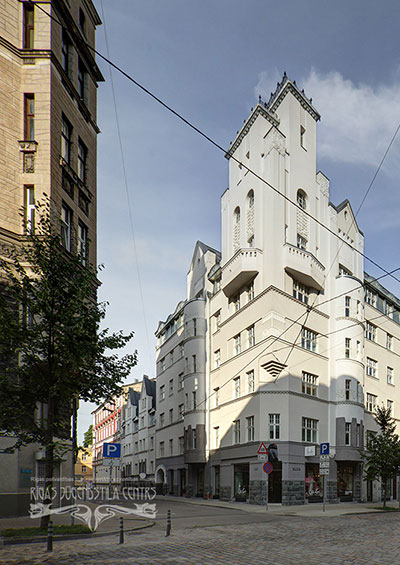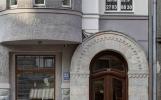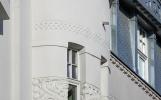






This building with its high cube-shaped corner turret, which draws attention to the corner of the whole block, resembles the image of an ancient Latvian castle. The expressive composition of the building with its well-articulated architectural elements is close to the language of Functionalism or Modern Movement of the second half of the 1920s.
Eižens Laube has used analogous architectural composition in several other buildings, for example, in the Romanov Bazaar at Lāčplēša lela 70 and 70b (1909; see D-27). In 1912. architect Ernests Pole repeated the principle of this composition at Aleksandra Čaka lela 67/69, but Eižens Laube himself used it in a modified format at Lāčplēša iela 51 (1909) and at Krišjāņa Barona iela 49 (1911). Also architect Rudolf Philipp Dohnberg used similar composition at Lāčplēša lela 21 (1910).